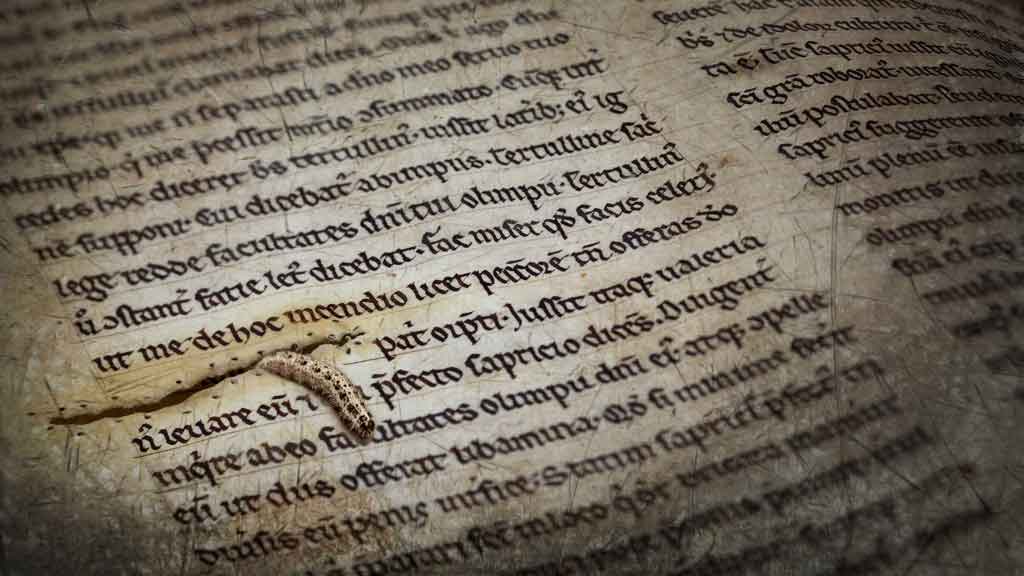Bookworms must have had a hard time back in the days of clay tablets and scrolls.

We can imagine them sitting impatiently on empty shelves, waiting for centuries, and finally cheering in the fourth century A.D. when somebody got the bright idea of sewing sheets of parchment together, creating the direct ancestor of the modern book.
Of course, bookworms don’t eat just books, they also eat any number of other things, both natural and man-made.
In fact, there isn’t just one species called the bookworm; the term is used to describe a number of moth and beetle larvae that infest books and eat the glue and binding.
Actual book-borers or eaters are uncommon. The larvae of the death watch beetle and the furniture beetle will tunnel through wood and paper if it is nearby the wood.
The book louse or paper louse is a tiny, soft-bodied wingless insect that feeds on unseen mold and other organic matter found in poorly kept books in archives, libraries, and museums. They will also attack bindings and other book parts, but are not actually a true louse.
Many other insects, like the silverfish and cockroach will consume these molds and starch-based bindings. Warm and moist climates like the tropics are perfect environments for these insects as mold is more likely to grow. Modern binding and paper are usually bookworm resistant.
Two types of moths will attack cloth bindings, and leather-bound books attract other bugs.
If computer bugs eat e-books, do tapeworms eat audio books?
